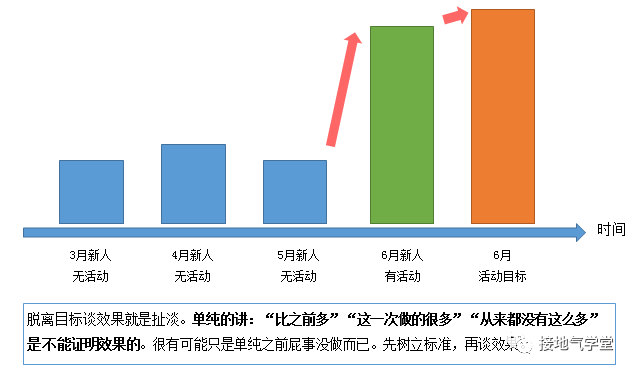In the final analysis, activity evaluation is another matter of clear thinking is more important than advanced technology, and keeping morals is more important than clear thinking.
Editor’s note: This article is from the WeChat public account “Grounding Qi School” (ID: gh_ff21afe83da7), The author’s down-to-earth teacher Chen.
“If you were asked to evaluate this event, how would you analyze it?” Whether it is an interview or work, students who do data writing often encounter this problem. Today we will explain the system.
Scene restoration:
A certain music APP conducts an activity for new users to receive 7 days of membership rights after a new registration. After registration, the user decides whether to click to receive it for a period of 1 month. Question: How to evaluate the activity.
Common errors in activity evaluation
First of all, keep in mind that for all questions that use evaluation/evaluation/judgment as verbs, there is only one answer: “good or bad”.
For example, how to evaluate the event, you can answer:
1, this activity is very good, should continue to do;
2, this activity is not good, can’t be done
3. This activity is not bad or not, tasteless
4. There is no change in this activity. If you do it, you can do it for nothing
This is the core conclusion of evaluation analysis. Leave these four sentences, the others are nonsense. For example:
-
40,000 new people registered during the event
-
The number of registered people during the event was 10,000 more than before the event
-
The click-through rate of new users during the event is 80%
-
During the event, the new user’s equity rate is 30%
All these are not conclusions, but just the analysis process. If there is no conclusion, directly throwing these process indicators, it is easy for the business side to ask: “So what? So what? What did you analyze? What is the conclusion!” In the end, I was disgraced.
Key issues in activity evaluation
In activity evaluation, we must first get a good/bad evaluation. If the evaluation is good, look againCan you continue to do it, and how many more times can you do it; if the evaluation is bad, look at where it is. If it is too bad, you can still use it.
Data + annotation = judgment. Therefore, to make a good/bad judgment, you need two things:
-
Clear evaluation indicators.
-
Clarify the target value.
It’s good if it reaches the standard; it’s not good if it doesn’t. It’s that simple (as shown below).
It seems simple, but in fact, operations often do:
1. Confused: The boss asks me to do it. As for why? I don’t know, we dare not ask.
2, dumb head and dumb head: I just want to pull newcomers, and the pull is over!
3. Opportunity: Anyway, it’s done before/others are doing it, and it’s done.
4. Fishing in troubled waters: This is to change users’ mental resources, how can data be measured!
In short, there are only two out of ten operations at most, and they can accurately state the current situation and goals. At this time, data analysts are required to have independent judgment. Only by analyzing business logic and sorting out business processes can we draw objective conclusions. Here we take a completely confused scene as an example to see how to help the operation clarify the purpose.
How to build an evaluation model from 0
The first step: Combine the activity process
Operational activities will change user behavior, which is reflected in changes in data indicators. To build an evaluation model from zero, the first step is to understand the specific process of the activity and understand the changes in user behavior that the activity may cause. For example, the new user’s rights to send in the question can be sorted as follows (as shown below):

